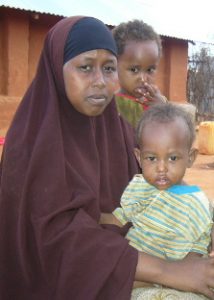 Female genital mutilation (sometimes called female genital cutting) is a traditional practice involving the cutting or removal of the external genitals for non-medical reasons. It has existed for more than 2,000 years, and is performed on girls of only a few days old, up to just before marriage. It is traditionally practiced by non-medically trained women, often in unsterile conditions and without anaesthetic. The use of unsterile equipment and using the same blade to cut many girls can increase the risk and spread of HIV and other infections.
Female genital mutilation (sometimes called female genital cutting) is a traditional practice involving the cutting or removal of the external genitals for non-medical reasons. It has existed for more than 2,000 years, and is performed on girls of only a few days old, up to just before marriage. It is traditionally practiced by non-medically trained women, often in unsterile conditions and without anaesthetic. The use of unsterile equipment and using the same blade to cut many girls can increase the risk and spread of HIV and other infections.
Worldwide an estimated 140 million women and girls are living with the consequences of FGM and 3 million are at risk each year.
In Kenya the latest data shows that nationally around 27% of girls and women aged between 15-49 have had FGM (2008). This has reduced from 37% in 1998. There are significant variations within the country and some ethnic groups have very high rates of practice, whilst others do not carry out the procedure at all. Amongst the Maasai, FGM is still widely practiced and the prevalence is at 73%.
For more information on FGM, including the World Health Organisation (WHO) classification of the different types of FGM and a summary of some of the harmful effects, please visit: http://www.28toomany.org/fgm-resources/what-is-fgm/
For more information specific to the practice of FGM in Kenya please visit: http://www.28toomany.org/media/uploads/final_kenya_country_profile_may_2013.pdf
Be First to Comment